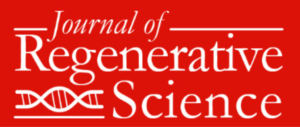Combined Regenerative Treatments for Musculoskeletal Disorders: Is this the Way Forward?
Editorial | Vol 5 | Issue 1 | January-June 2025 | page: 01-02 | Daniel Moya
DOI: https://doi.org/10.13107/jrs.2025.v05.i01.153
Open Access License: CC BY-NC 4.0
Copyright Statement: Copyright © 2025; The Author(s).
Submitted Date: 05 Feb 2025, Review Date: 15 May 2025, Accepted Date: 25 May 2025 & Published: 30 Jun 2025
Author: Daniel Moya [1]
[1] Department of Orthopaedics, Hospital Británico de Buenos Aires, Argentina.
Address of Correspondence
Dr. Daniel Moya,
Department of Orthopaedics, Hospital Británico de Buenos Aires, Argentina.
E-mail: drdanielmoya@yahoo.com.ar
Editorial
If we had the opportunity to visit a European pharmacy during the 16th century, we would surely find crushed Egyptian mummies among the medicines for sale [1]. Its use was indicated for all types of ailments, from headaches or indigestion to treating the consequences of bubonic plague [2].
The practice of consuming parts of ancient Egyptian mummies began in the 11th century [3], and its widespread in Western Europe was in fact, due to a series of mistranslations and misunderstandings [1]. The Persians considered asphalt a miraculous substance, with healing effects in the treatment of wounds and fractures. They called this substance “mum” [3]. It was first described in detail in the Arabic medical pharmacy texts as “mumiya” [1-4]. Probably, translation errors and the fact that Egyptian mummies were covered in a layer of resin, led to the conclusion that eating mummies powder would have beneficial effects on health. The custom spreaded from Byzantium throughout Europe, remaining in some cases until the 19th century [1-4].
These stories, which are laughable today, reflect human nature and its eternal search for the source of eternal youth and health. While therapeutic attempts may change over the centuries, our nature remains the same. The explosion of interest in “regenerative medicine” in recent years has opened up new hope as a healing option that is often presented as miraculous. As if the constant emergence of new therapeutic options whose effectiveness is not fully proven was not enough, we also faced the capricious combination of these methods. It is not uncommon to see the indiscriminate dissemination of these techniques by colleagues on social media and congresess and its application in medical practice without solid scientific evidence. For example, the proposal to combine shock waves with platelet-rich plasma has become very popular at scientific conferences and presentations. However, there is no solid evidence to support it for most musculoskeletal indications.
A simple ankle sprain is treated with four different therapeutic methods simultaneously. After 2 weeks, the hematoma and edema miraculously resolved!!! The same thing that would happen only with ice and rest.
In the case of a professional athlete, where a positive result is needed as quickly as possible, it may make some sense to deviate from the usual norms, but it is not necessarily valid to apply this as a massive practice.
The principle of Ockham’s razor is a philosophical rule that recommends choosing the simplest explanation in situations where several explanations for the same phenomenon are presented [5]. It is very difficult to apply in cases of combined treatment. When many therapies are applied, we’ll never know which method really cured the patient, if any of them actually made a difference, but the professional and the promoted devices will undoubtedly increase their sales. Likewise, if the patient worsens, we will not know which treatment or combination of treatments was responsible for the poor outcome.
It is important to differentiate between “complementary treatments” and “combined treatments.” We could say that in the case of complementary treatments, we use techniques that have different objectives and mechanisms of action, for example immobilization, ice, and rest in the case of an acute traumatic injury. In the case of “combined” treatments, there is often an overlap of mechanisms of action.
In his unforgettable television series on the development of science and technology, Burke [6] stated, “If you follow the trail from the past to a modern procedure used by humanity, the story has many twists, turns, false leads, and conjectures.” New therapeutic alternatives can offer us the results we’ve always desired, but in some cases, they may be false leads. Scientifically based study of the combination of therapeutic methods before offering them commercially and undiscriminatingly will prevent our generation from becoming the mummy powder salesmen of the 21st century that will cause laughter in the future among those who follow us on the path of medicine.
References:
1. Dannenfeldt KH. Egyptian mumia: The sixteenth century experience and debate. Sixt Century J 1985;16:163-80.
2. Abel GM. Mummy Extract, the Multipurpose Remedy of the Middle Ages in Spanish. National Geographic; 2023. Available from: https://historia.nationalgeographic.com.es/a/extracto-momia-remedio-multiusos-edad-media-18121 [Last accessed on 2025 May ???].
3. Blakemore E. The Gory History of Europe’s Mummy-Eating Fad. National Geographic; 2023. Available from: https://www.nationalgeographic.com/history/article/mummy-eating-medical-cannibalism-gory-history [Last accessed on 2025 May].
4. Bouras-Vallianatos P, Käs F. Treating with minerals in the middle ages: The rare substance mūmiyā‘ (pitch-asphalt) and its medicinal uses in Byzantium. Med Hist 2024;68:223-36.
5. McFadden J. Razor sharp: The role of occam’s razor in science. Ann N Y Acad Sci 2023;1530:8-17.
6. Burke J. Connections. BBC; 1978. Available from: https://archive.org/details/connectionsbyjamesburke [Last accessed on 2025 May].

| How to Cite this article: Moya D | Combined Regenerative Treatments for Musculoskeletal Disorders: Is this the Way Forward? | Journal of Regenerative Science | Jan-Jun 2025; 5(1): 01-02. |

Leave a Reply
Want to join the discussion?Feel free to contribute!